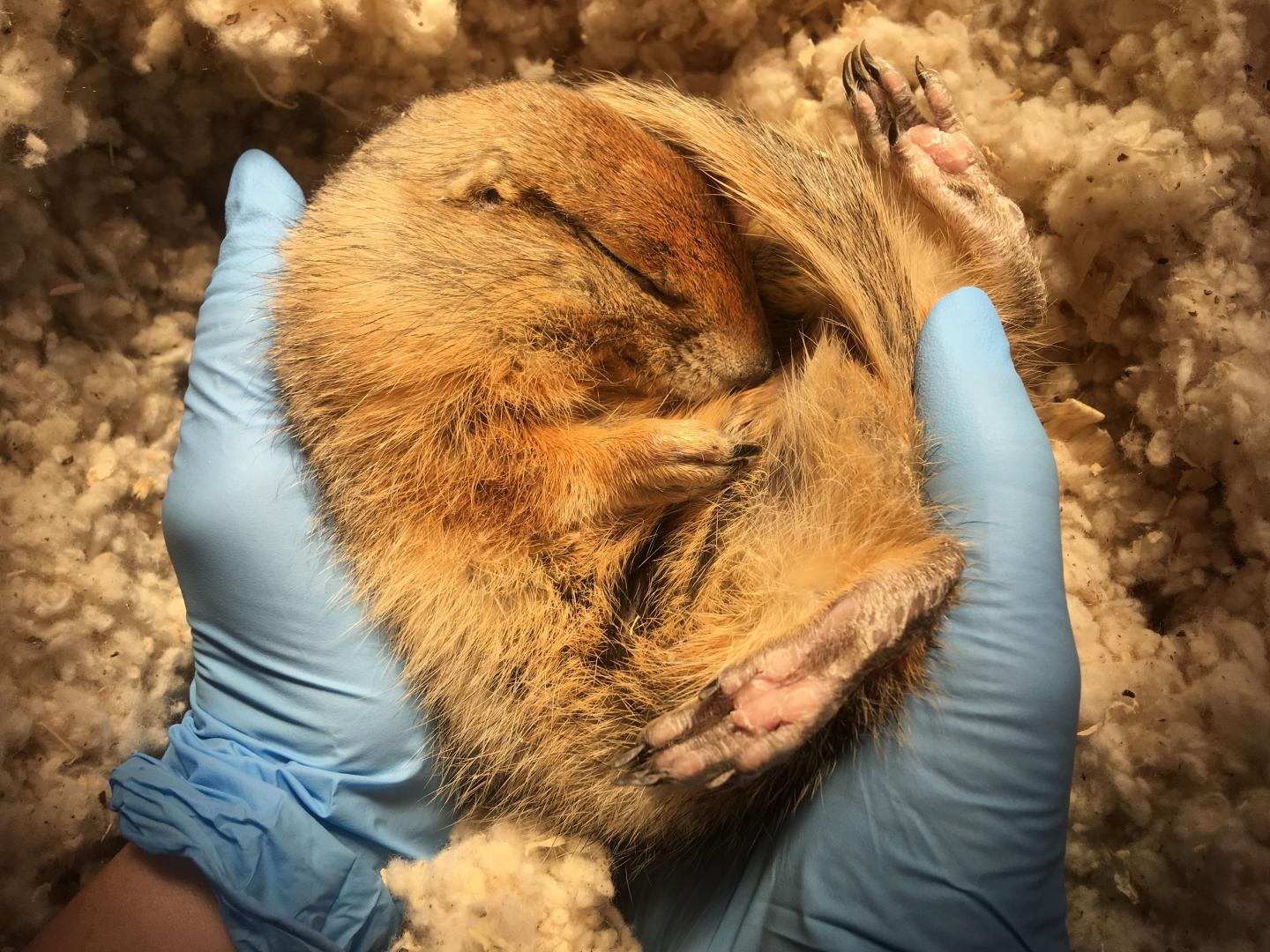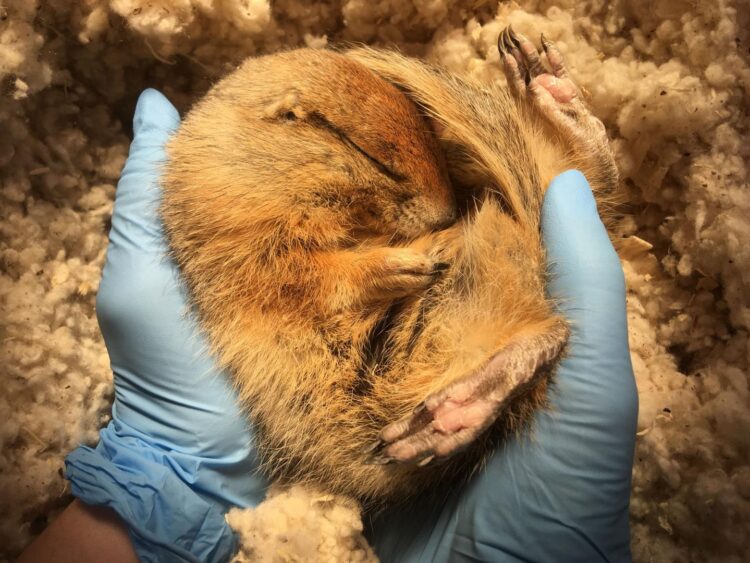
Credit: Carla Frare photo
By studying the body chemistry of hibernating Arctic ground squirrels, researchers have found that the animals are able to recycle their body’s own nutrients to survive during a long, inactive winter.
A University of Alaska Fairbanks-led study monitored ground squirrels in a laboratory environment for two years, measuring the almost undetectable flow of nutrients through their hibernating bodies. As the ground squirrels’ muscles slowly broke down in temperatures just above freezing, researchers found that the animals were able to convert the free nitrogen they were creating into amino acids.
Using those amino acids, the ground squirrels may be able to synthesize protein in tissues such as lungs and kidneys, and skeletal muscle.
The discovery could unlock more of the mysteries of hibernation, leading to new insights in human medicine. The study was published Dec. 7 in the journal Nature Metabolism.
Researchers have been fascinated by the body chemistry of Arctic ground squirrels because of the rodents’ long, deep hibernation periods. Their bodies almost entirely shut down for as long as 8 months a year, going without food and water while breathing just once per minute. Despite that, hibernating ground squirrels are uniquely resilient to muscle loss and long-term cellular damage.
“They’re just this extreme hibernator, and during the time they hibernate they don’t eat, they don’t drink, and they don’t have any underlying injuries to their bodies,” said Sarah Rice, a Ph.D. student at UAF’s Institute of Arctic Biology and lead author of the paper.
The findings complement previous research that suggested that hibernators recycle urea, a waste product that is excreted in urine. Researchers had theorized that those animals also recycle nitrogen to retain their body tissue during extreme fasting, but the new study offers the first time that process has been confirmed in real-time on a metabolic scale.
Learning more about the biochemistry of hibernation could contribute to a variety of potential medical treatments for humans, including the prevention of muscle loss in cancer patients and the elderly. Understanding biological adaptations that are made during hibernation could also help treat traumatic injuries and aid astronauts during space travel.
By analyzing how hibernators keep themselves healthy, the approach offers a different perspective than therapies that often focus on overcoming and treating injuries, Rice said.
“It’s fun to kind of turn that idea on its head,” Rice said. “Instead of studying what goes wrong in the world, it’s important to study what goes right.”
###
Other contributors to the paper include Kelly Drew, Carla Frare, Bahareh Barati, and Trey Coker, Center for Transformative Research in Metabolism, University of Alaska Fairbanks; Nicolaas Deutz and Gabriella Ten Have, Center for Translational Research in Aging and Longevity, Texas A&M University; and Julie Reisz, Sarah Gehrke, Davide Stefanoni, and Angelo D’Alessandro, Department of Biochemistry and Molecular Genetics, University of Colorado Anschutz Medical Campus.
Media Contact
Jeff Richardson
[email protected]





